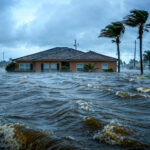Researchers are preparing to conduct a two-month study of earthquakes in central Virginia, a region that has a history of seismic activity.
Twenty seismic stations are being installed for the study by researchers from Virginia Tech and the U.S. Geological Survey.
The region is “sort of a natural laboratory for earthquake work,” Virginia Tech seismologist Martin Chapman told the Richmond Times-Dispatch.
“It’s an area where we think with a little investment, we’ll learn a great deal about earthquakes in eastern North America,” Chapman said.
More than 450 aftershocks have been recorded since a magnitude 5.8 earthquake near Mineral in August 2011.
The electromagnetic sensors, each about the size of a soda can, will help the researchers study the background seismicity and any continuing aftershocks from the 2011 earthquake. The seismic stations will be located in Louisa, Powhatan, Goochland, Cumberland, Buckingham, Fluvanna and Albemarle counties.
Researchers expect the sensors to record tiny ground vibrations from about 100 quakes during the study. Although earthquakes are frequent in the region, they’re too weak for people to feel them, Chapman said.
“We think it’s a good thing that the USGS and Virginia Tech are adding more seismic monitors around the Mineral area,” Dominion Virginia Power spokesman Rick Zuercher told the newspaper.
The electric company has its own seismic monitors at its North Anna nuclear power plant near Mineral, he said, but “the more data we have on it, the better.”
The 2011 earthquake shook the North Anna plant offline but caused no functional damage to its two reactors’ safety systems.





















 AIG Leads Launch of Reinsurance Syndicate at Lloyd’s
AIG Leads Launch of Reinsurance Syndicate at Lloyd’s  Four P/C Insurers Are ‘AI Titans’; AI Impact Leaders Revealed: Research
Four P/C Insurers Are ‘AI Titans’; AI Impact Leaders Revealed: Research  Moody’s: Rising Flood Risks Posing Greater Challenges for Eastern and Southern U.S.
Moody’s: Rising Flood Risks Posing Greater Challenges for Eastern and Southern U.S.  Insurance Carrier Employees Are Bored; Most Boring Rankings Published
Insurance Carrier Employees Are Bored; Most Boring Rankings Published 





